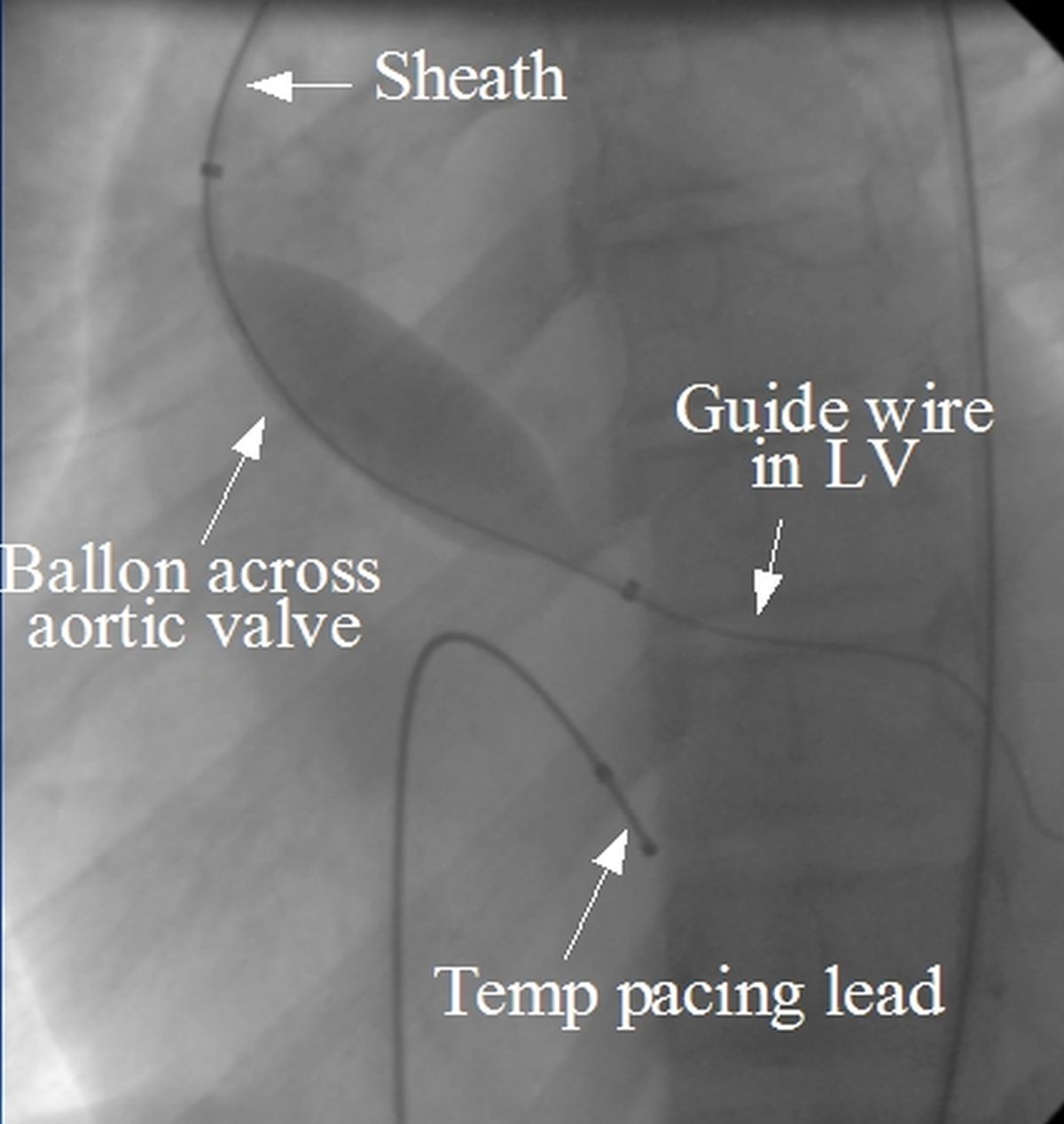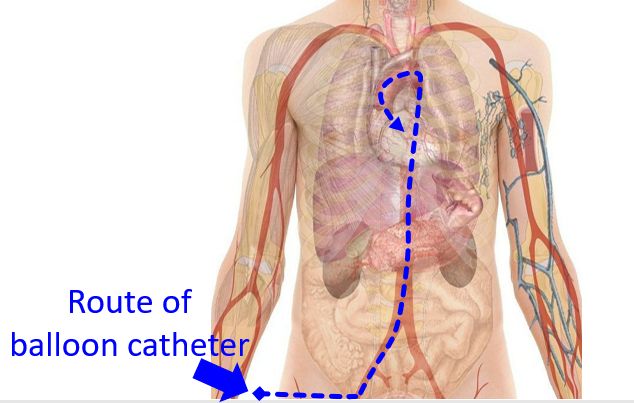Balloon aortic valvuloplasty
Balloon aortic valvuloplasty
Balloon aortic valvuloplasty is enlargement of a narrowed aortic valve using sturdy balloons attached to the end of small tubes known as balloon catheters. Aortic valve is the valve between the aorta and the left ventricle. Left ventricle is the lower left chamber of the heart. Aorta is the large blood vessel arising from the left ventricle, which takes blood to the whole body. Balloon aortic valvuloplasty has significant risks and lesser benefits compared other procedures for narrowed aortic valve like surgical valve replacement and transcatheter aortic valve implantation or TAVI. Hence it is often considered as a bridge treatment or palliative treatment.

Three important scenarios in which balloon aortic valvuloplasty or BAV is considered are: Bridge to decision, bridge to planned treatment and as palliation. A decision for BAV is taken by a Heart Team comprising of cardiac and cardiac surgical specialists. Bridging as the term implies, buys time for either the decision making process or planned treatment when the person is quite sick. Bridging can be done for planned non cardiac surgeries and even for tiding over pregnancy and labour. Palliation of course, is when the person is unlikely to be fit for either surgical aortic valve replacement or TAVI.
BAV devices are introduced through the femoral artery, the blood vessel which carries oxygenated blood to the legs. A guide wire is passed through a small skin puncture under local anaesthesia and passed upwards through the aorta into the left ventricle. The balloon catheter is threaded across the guide wire and positioned across the narrowed aortic valve. Narrowing of aortic valve is technically known as aortic stenosis. The catheter is guided using continuous X-ray imaging in a special procedure room known as cardiac catheterization laboratory.

Once the exact position across the narrowed aortic valve is confirmed, the balloon is inflated using a syringe from outside, relieving the obstruction. Potential risk is the development of a leak in the aortic valve, which may be poorly tolerated. Another potential risk is that debris containing calcium may break off from the damaged valve and travel in the blood circulation. These can block a blood vessels elsewhere, like in the brain.
A good increase in the valve orifice will improve the condition of the sick person. This will permit a future surgical aortic valve replacement or TAVI. As mentioned earlier, it has also permitted safe transit through pregnancy and delivery in some instances. Another situation is someone waiting for a major surgery like extensive cancer surgery. Improvement in medical condition after balloon aortic valvuloplasty may also permit such surgeries.
